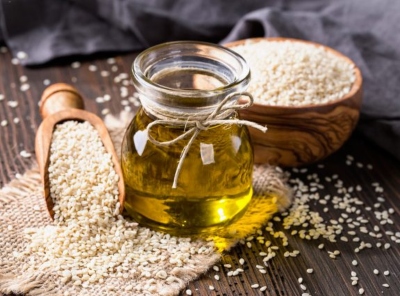For centuries, sesame has been a staple of human nutrition. Japan, which is famous for its healthy cuisine, consumes the largest amount of sesame in the world and the country that produces the most sesame is Burma.

Asia loves sesame and its oil! They use it almost everywhere because they know that it is an important food product that benefits the body and protects it as well as all healthy foods.
It offers:
1. Lowering or regulating cholesterol. Lignan and sesamine help in fat metabolismaturated fatty acids.
2. Reduction of blood pressure due to the high content of sesame in polyunst osteoarthritis of the knee, reduces pain if consumed daily.
3. Protection against thrombosis, sesame seeds inhibit platelet aggregation.
4. Protection agains.

5. Antioxidants that protect against cholesterol.
6. Dermatological uses mainly in protection against sunburn and wrinkles.
7. Improving digestion. High fiber content helps.
8. Enhance metabolic function. Its seeds contain high levels of plant protein that helps cells grow.

Nutritional Elements of Sesame
Energy 529kcal
Proteins 18,8gr
Total lipids 28,3gr
Saturated 4,8gr
Monounsaturated 7,5gr
Carbohydrates 34,1gr
Fiber 11,2gr
Water 6,0gr
Sodium 4mg
Potassium 884mg
Calcium 393mg
Magnesium 382mg
Iron 11,86mg
Spelter 7,7mg
Copper 2,20mg
BY Dr Angel,
Aggeliki Koskeridou
Holistic Doctor – Counseling Psychotherapist
Doctor of Naturopathic Medicine
MSc Health Psychology
insta: dr_aggelikikoskeridou_official
Sources:
Kandangath Raghavan Anilakumar, Ajay Pal et al, (2010), Nutritional, Medicinal and Industrial Uses of Sesame (Sesamum indicum L.) Seeds - An Overview, hrcak, https://hrcak.srce.hr/66001?fbclid=IwAR2Pvi_GMWWixnI8ftW50vqylm5E2W2nn5eQTcdTNL2z_NNT7gQl_f5G0Jk&lang=hr
M. Elleuch, D. Bedigian et al, (2011), Sesame (Sesamum indicum L.) Seeds in Food, Nutrition, and Health, Science Direct, https://www.sciencedirect.com/science/article/pii/B9780123756886101227
Mitra Analava, (2017), Study on the Benefits of Sesame Oil Over Coconut Oil in Patients of Insulin Resistance Syndrome, Notably Type 2 Diabetes and Dyslipidaemia, Journal of Human Ecology, https://www.tandfonline.com/doi/abs/10.1080/09709274.2007.1190600



